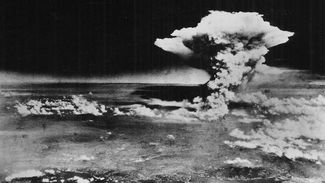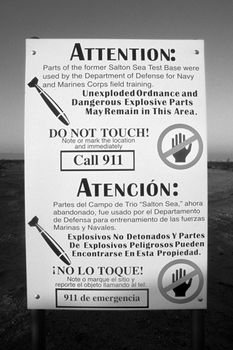Atomic Bomb 70th Anniversary
Last updated 8/27/2015 at 3:49pm

Photo from The Desert Sun
The mushroom cloud formed an hour after the the atomic bomb detonated in Hiroshima, Japan.
It's been seventy years since an atomic bomb was exploded over the city of Hiroshima, causing the beginning of the end for the war against Japan and an unprecedented toll on humanity.
The Salton Sea played a pivotal role in preparation for the bombing when B-29s from remote Wendover Army Air Force Base in Utah, used the area for bomb practice prior to the assault.
Months before Lt. Col. Paul Tibbets and the crew of the B-29 bomber Enola Gay dropped the atomic bomb on Hiroshima, they flew high over the Salton Sea, dispatching dummy bombs and practicing the manoeuvres that would enable them to escape the blast.
Although the bombs were heavier and more unwieldy than the aircraft were designed to carry, and precise targeting from 30,000 feet was an enormous challenge, the planes were taken up hundreds of times to perfect the crews timing and teamwork in preparation for the mission.
The base was in what is today the Salton Sea Wildlife Refuge at Sandy Beach, and covered 81 square miles, two-thirds of which was under water. Selected as the practice site for this secret work due to its remote, isolated location, the Salton Sea was far from any towns and able to house four 60-by-60-foot wooden structures, built on pilings and rigged out on to the water.
The 509th squadron, based at Wendover Air Base on the Utah-Nevada border, flew practice runs to the Salton Sea Naval Base, dropping prototype bombs, called "pumpkins". 300 so-called blockbuster bomb casings were made available, made of cast iron, basalt rock and concrete. The dummy weapons resembled the shapes of the real atomic bombs and weighed about 10,000 pounds each.
"Ruin From The Air: The Atomic Mission to Hiroshima" by Gordon Thomas and Max Morgan Witts, the book describes how the men took on the mission:
"Crews made hundreds of practice runs over the Mojave Desert and the Salton Sea. The test bombs were full-sized mock-ups of the real thing - the long and slender uranium 'Little Boy' that would fall on Hiroshima and the bulbous plutonium 'Fat Man' that would hit Nagasaki.
"Most of the mock-ups were filled with concrete, but some contained everything but the nuclear components, including large quantities of conventional explosives in the triggering mechanisms.
"On one Salton Sea run, a consulting engineer accidentally dropped one of the explosive 'Fat Man' mock-ups too soon.
"Narrowly missing the town of Calipatria, the bomb buried itself in a hole 10 feet deep, but somehow failed to explode. Bulldozers were rushed to the scene to erase evidence of the accident."




